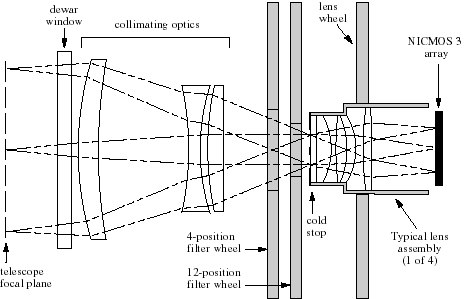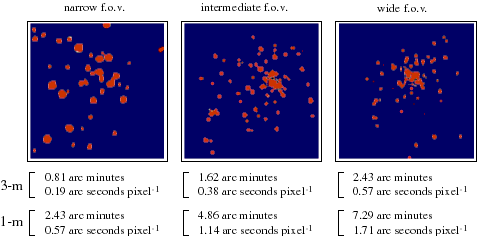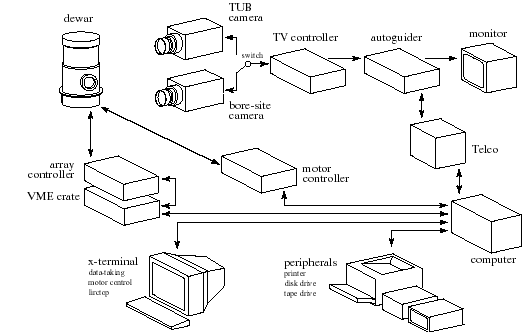
Figure 2. above illustrates the dewar's internal optics. The telescope focal plane lies approximately 70-mm in front of the dewar window. Just behind the window, a three-element lens assembly collimates the beam. This is followed by independentally positioned "front" and "back" filter wheels with four and twelve positions respectively. Table 1. below lists their contents. Filter transmission curves can be found elsewhere in thei manual.
|
|
Figure 3. below shows the globular cluster M97 as it appears on the array at the 3-meter telescope, with each field of view. Field size and plate scale are given for each of the three lenses at each telescope. North is at bottom, East at left, on the data-taking system displays at both telescopes.

The observer opeartes the instrument from the telescope control room via the data-taking, motor control, and "lirctop" programs, all of which run in X-windows on the user's terminal. Figure 4. shows how the various parts of LIRC-II and its associated systems fit together.

The data-taking program permits the user to input observing parameters, control the array, provide information for the FITS header, and control data recording. The motor-control program operates the lens and filter wheels and the moveable dichroic beamsplitter. Lirctop is a collection of Vista routines which automate various observing procedures such as dithering, mosaicing, and calibrating. The links in this paragraph lead to detailed guides for these programs.
The bore-site and TUB guide cameras share the same standard Lick TV camera controller. Either can be used for acquisition and to provide the signal for the Lick autoguider, however, the two cameras differ in some important respects. Choosing the best TV camera is discussed in the section on Acquisition/Guide Cameras.
Output devices for LIRC-II data include an X-Window terminal, high-capacity disk drive, 8-mm Exabyte tape drive, and a laser printer.